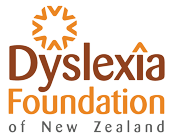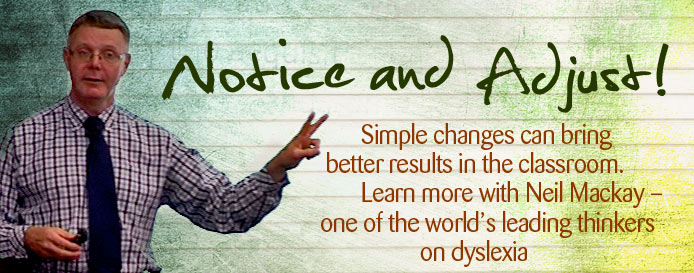In June 2009, international dyslexia expert Neil Mackay ran a sold-out nationwide series of workshops for New Zealand educators and parents, sharing tips on how to improve the learning environment for Kiwi schoolchildren. The feedback from these inspiring workshops was incredible, and we have received many requests to make Neil Mackay’s expertise more widely available.
We are now working to create a dedicated Neil Mackay webspace that will be jam-packed with helpful tips and strategies for the classroom. We will also be updating our revolutionary 4D | For Dyslexia schools programme to incorporate key learnings from the workshops.
In the interim, the 4D Guide – available for free here – remains a fantastic resource for teachers who want to bring about positive change in the classroom. The 4D website is also full of useful tips and strategies for helping dyslexic students. Based on principles of empowerment, collaboration and change, the 4D programme was designed in consultation with Mr Mackay. It is designed to provide guidance for schools to recognise dyslexia, define their position on dealing with it and then take suitable action. It includes more than 20 simple things teachers can do to create a positive learning environment, from reviewing seating layouts through to use of new technology.
With 26 years teaching experience, Mr Mackay is focused on realistic solutions to classroom issues, and on how the learning environment can be radically improved by treating dyslexia as a learning preference. This means understanding that dyslexic individuals actually think differently, receiving and retrieving information in a different part of their brain.
Brain research, including studies from Yale and Auckland universities, has shown that while it is common to use the ‘verbal’ left side of our brain to understand words, dyslexic people use the ‘pictorial’ right side – making them slower to process and understand language, but stronger in creative areas like problem solving, empathy and lateral thinking. Dyslexic individuals tend to think in big pictures and concepts, and may take longer with detail.
Mr Mackay’s mantra is “notice and adjust” – notice those children who are getting stuck and make reasonable adjustments in the way they are taught and assessed, including personalised learning and alternative evidence of achievement. Personalised learning includes strategies based on developing comprehension through use of context, syntax and grammar, and looking at areas such as organisation of ideas, planning skills, learning to remember, raising self esteem and valuing emotional intelligence.
This “notice and adjust” philosophy fits perfect with New Zealand’s new National Curriculum – which both challenges and gives permission to schools to do things differently and teach more creatively – and with the self-managing schools environment. It also gives teachers a head-start on achieving better learning outcomes, in line with the increased accountability mandated with the Government’s Crusade for Literacy and Numeracy. Importantly, adopting Neil Mackay’s thinking in the classroom has benefits not just for dyslexic learners but for students at both ends of the ability spectrum.
Neil Mackay is the creator of Britain’s Dyslexia Friendly Schools concept and author of the acclaimed resource book Removing Dyslexia as a Barrier to Achievement. He has been an HM schools inspector and is now a teaching fellow at Trinity College Carmarthen (University of Wales). He is also a consultant to the British Dyslexia Association as well as Education Authorities and Departments in the UK, Hong Kong and Malta.
We are very excited about developing the new Neil Mackay webspace to share more of Mr Mackay’s expertise and we look forward to launching this in the coming months. In the meantime, if you are not already part of the 4D revolution (and more than 400 Kiwi schools already are), check it out here.
|
|

|
|

